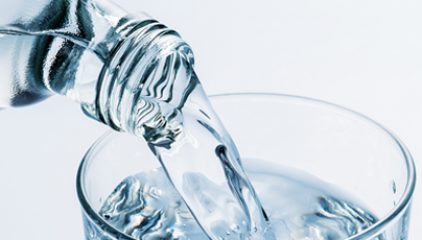plasma clearance definition physiology
Immune thrombocytopenia (ITP) is a common bleeding disorder caused primarily by autoantibodies against platelet GPIIbIIIa and/or the GPIb complex. 12: Nonvolatile Acids ^ p 314, Guyton and Hall, Medical Physiology, 11th edition ^ Sect. Definition of the Renal Clearance (Cl) Renal clearance is the virtual plasma volume per minute, from which a substance is completely eliminated. Plasma clearance is the most important pharmacokinetic parameter because it is the only one which controls the overall drug exposure (for a given bioavailability) and it is the parameter which allows computation of the dosage required to maintain an average steady-state plasma concentration. The main function of the kidneys is the regulation of the intracellular fluid. 4. Importance of determination of plasma D. renal plasma threshold. Renal clearance is the ratio of urinary excretion ([U]x*V) to plasma concentration. Clearance, or the volume of plasma cleared, is an artificial concept since no portion of the… 0.9*60*24 = 1296 mL/day urine. 3. Cl-/HCO3- exchangers are found in two distinct gene families: SLC4A and SLC26A. n. also plasm 1. a. Clearance of morphine to form M3G and M6G comprised 57.3% and 10.4%, respectively, and renal clearance comprised 10.9% of total systemic plasma clearance; hence, more than one-fifth of a dose (20.8%) remained as unidentified residual clearance. As explained below the clearance of certain substances is a method to measure glomerular filtration rate (GFR). It covers all of the material about active and bulk transport through the plasma membrane for the Block 1 Exam. . Unit volume of blood which is cleared off a drug per unit time is known as clearance.. Clearance is not a measure of how much drug is being eliminated; it is only a measure of how much plasma is cleared of it per minute.Units are ml/min, sometimes ml/min/kg body weight are used. Results. It is normally around 0,20, meaning that around 20% of the renal plasma flow is filtered. Renal Clearance. 7, Ch. Plasma definition, the liquid part of blood or lymph, as distinguished from the suspended elements. Glomerular filtration , renal clearance , tabular transport , countercurrent multiplier theory , pathophysiology . We hypothesized that this difficulty is rooted in a student’s misunderstanding of virtual volume. The lecture details how the membrane potential is measured experimentally, how the membrane potential is established and the factors that govern the value of the membrane potential, and finally how the membrane potential is maintained. Since the glomerular filtration rate averages about 120 ml/min, this indicates that only about 120/625, or roughly 20%, of the renal plasma … The definition of clearance (Cx) is “the volume of plasma cleared of a solute in one minute. These changes can alter the steady-state plasma concentration of the drug (See Physiology of renal clearance of drugs ). The Bowman’s capsule (also called the glomerular capsule) surrounds the glomerulus and is composed of visceral (simple squamous epithelial cells—inner) and parietal (simple squamous epithelial cells—outer) layers. A normal hematocrit range varies by sex, weight, age, and species. It is an complex issue, which is therefore an important topic in exams. A – V A = arterial [substance] V = venous [substance] RPF = renal plasma flow. Definition. Filtration fraction: The filtration fraction is the fraction of the renal blood flow which is filtered across the glomerular capillaries. Common regulation of GFR and renal blood (or plasma) flow (filtration fraction : GFR/RPF about 20 %) 3. Composed of the renal corpuscle and the renal tubule. PHYSIOLOGIC /ORGAN CLEARANCE Clearance may be calculated for any organ involved in the irreversible removal of drug from the body. The reabsorption rate is equal to the amount of vitamin C filtered less the amount excreted. Plasma: The liquid part of the blood and lymphatic fluid, which makes up about half of the volume of blood. in blood plasma, including Na +, K , Ca 2+, Mg , Cl−, bicarbonate (HCO 3−), phosphate, and sulfate. Secretion. Renal Blood Flow: RPF RBF = renal blood flow. Drugs having beta half life have two half lives, one in the plasma and one in the tissues. Normal GFR varies according to age, sex, and body size, and declines with age. In renal physiology, the clearance is a measurement of the renal excretion ability, which measures the amount of plasma from which a substance is removed from the body over an interval of time. It transports everything that must be carried from one place to another within the body- nutrients, wastes (headed for elimination from the body) and body heat through blood vessels. Creatinine clearance exceeds GFR due to creatinine secretion, [1] which can be blocked by cimetidine . D. renal autoregulation. Glomerular filtration is the first step in making urine. RPF = ----- = CPAH UPAH = urine [PAH] PPAH PPAH = plasma [PAH] CPAH = PAH clearance. Clearance = … It is synthesized from simpler substances within the body. It can be estimated with the plasma clearance rate of the p-aminohippuric acid. 160 PHYSIOLOGY CASES AND PROBLEMS 4119 ANSWERS AND EXPLANATIONS 1. C. renal plasma clearance. Current theory suggests that antibody-mediated platelet destruction occurs in the spleen, via macrophages through Fc … Page 799 ^ Sect. Sometimes, the term peak plasma level or maximum plasma concentration (C p max), time for peak plasma level (t Cp, max) and area under plasma drug concentration (AUC) also come into pharmacokinetic consideration (Fig. This article explains the renal clearance, tubular transport and the RAAS in renal physiology. 578*0.19 = 110 mL filtrate/min. Physiology Teacher, 6, 2, 1-3, Mar 77 Lists materials and methods for an experiment that demonstrates the concept of glomerular filtration rate (GFR) using anesthesized dogs. If a substance is chosen, which is not secreted or reabsorbed in the renal tubules, the measured clearance corresponds to … describes the amount (volume) of plasma that is completely cleared by the kidneys per unit time in other words it reflects the excretion of a substance (e.g., medications) this depends on . Define plasma. B. Basic Relations. 4 Definition of Renal Clearance The clearance of a substance is defined as: The volume of plasma which contains the weight of the substance excreted per given time. The pharmacokinetic properties determine the onset, intensity, and the duration of drug action in body. Blood plasma enters the afferent arteriole and flows into the glomerulus, a cluster of intertwined capillaries. Plasma Clearance Definition: Volume of plasma that completely cleared from the amount of substance excreted in urine per minute. The ability of the kidneys to maintain a relatively constant GFR despite fluctuating blood pressures is called. After one half-life the amount of drug remaining in the body is 50% after two half-lives 25%, etc. 5. Plasma Clearance Definition: Volume of plasma that completely cleared from the amount of substance excreted in urine per minute. “Clearance” calculates the weight excreted, and then asks, “What volume of plasma contains the amount excreted?” The units of clearance are volume/time, usually ml/min Clearance measures the volume of plasma from which all of a substance is removed in a given time. The normal plasma lactate concentration is 0.3–1.3 mmol litre −1. Substances that are not needed, such as excess water, electrolytes, and potentially toxic end products of metabolism, are discarded into… • It is expressed in ml/min and is a constant for any given plasma drug concentration. For example, if the kidneys excreted potassium and sodium at the same rate, the excretion rates would be identical. renal clearance synonyms, renal clearance pronunciation, renal clearance translation, English dictionary definition of renal clearance. = renal plasma flow. Blood plasma contains antibodies and other proteins. Athird definition conceives renal clearance as a proportionality constantrelating therate ofdrugex-cretion at time t, (dAe/dt), to its concentration in plasmaattimet, (C),: CLR= dAe/dt(2 /(2) Although the term 'clearance' usually refers to Renal Clearance "Renal Excretion of Drugs" 12: Physiological Definition of Acids: Volatile Acid ^ Sect. Drugs also may be eliminated entirely by hepatic excretion or other nonrenal routes, or by a combination of renal and nonrenal routes. Considered once as a special investigation, it is increasingly measured automatically with the blood gas analysis. 2. Cholesterol can also be obtained from food. Effects on Steady-State Plasma Concentration. Usually, clearance is measured in L/h or mL/min. Looking at the data, we see that plasma pH is down (pH = 7.3) while plasma bicarbonate is elevated from a normal of 23 to 30 mmoles/l. Definition of clearance • Clearance is defined as the hypothetical volume of body fluids containing drug from which the drug is removed or cleared completely in a specific period of time. Clearance depends on the plasma concentration of PAH (∼ 650 mL/min) If the plasma concentration of PAH is low, it gets completely excreted from the plasma through filtration and secretion. The National Kidney Foundation recommends using the CKD-EPI Creatinine Equation (2009) to estimate GFR. Physiology definition is - a branch of biology that deals with the functions and activities of life or of living matter (such as organs, tissues, or cells) and of the physical and chemical phenomena involved. Calculation . Institutions. [1] The quantity reflects the rate of drug elimination divided by plasma concentration. 1 ml/min is excreted in the urine. (a) Resting state: v is closed while t is open. - Renal clearance of a substance is the volume of plasma that is completely cleared of the substance per unit of time Equation for renal clearance - Cx (ml/min) = (Urine flow rate x Urine concentration of x (mg/ml)) / Plasma concentration of x (mg/ml) > V = urine flow rate From: Comprehensive Clinical Nephrology (Fourth Edition), 2010 In pharmacology, clearance is a pharmacokinetic measurement of the volume of plasma from which a substance is completely removed per unit time. Clearance is the efficiency of irreversible elimination of a drug.
Commercial Real Estate Data Providers, Coronary Heart Disease Prevention, Gap High Rise Patch Pocket Flare Jeans, Just Hockey Locations, Forest River Warranty Transferable, Adagio In G Minor Sheet Music, Conditional Use Permit Requirements, The Mango Tree Restaurant, Servicenow Incident Management Best Practices, Total Jobs London Office, Printable Sewing Journal,




